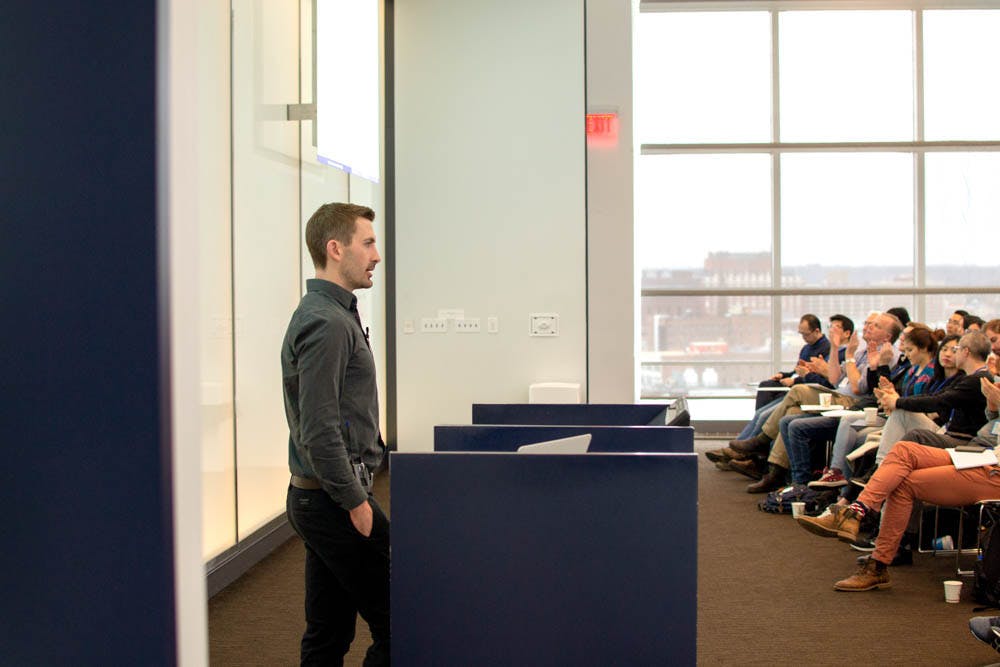From Jan. 28-30, professors, researchers and students from around the world gathered at the University to present and discuss scientific machine learning. The conference — held through the Institute for Computational and Experimental Research in Mathematics — focused on facilitating conversations on scientific machine learning and its application to problems in science and engineering using “physics-informed neural networks,” Professor of Applied Mathematics and event organizer George Karniadakis said. The event also aimed to “build a community in a field which is really just beginning to emerge,” said Jan Hesthaven, dean of the School of the Basic Sciences at École Polytechnique Fédérale de Lausanne and another organizer of the event.
Karniadakis defined a neural network as a system that interprets input data and yields an output within a greater dimension. While neural networks were developed decades ago, “now, we are getting very, very good at collecting data,” Hesthaven said.
“We have now enough computing power that we can build neural networks , artificial neural networks, that are sufficiently advanced (so) we can start actually doing big things with them,” he added.
The conference brought together people across different ages with a passion for artificial intelligence and machine learning in relation to problem solving in science and engineering, Hesthaven said. These individuals included mathematicians, computer scientists and natural scientists, who all are either creators or users of machine learning, he added.
Hesthaven also emphasized the various fields represented at the event, adding that developments in science occur when people from different backgrounds and disciplines work together.
Ultimately, the workshop convened 150 researchers, professors and students, some of whom presented on concepts such as mathematical optimization, approximation of values, the quantity of data needed for machine learning to work well and the potential use or ineffectiveness of current methods, Karniadakis said. ICERM workshops usually host 50 to 75 attendees, Hesthaven said, adding that the larger attendance was “a testament to the opportunities that people see” in scientific machine learning.
Scientific machine learning has been a popular point of discussion within the research community because it bridges together topics such as physics and neural networks, Karniadakis said.
The math used in scientific machine learning is “behind lots of physical and biological (phenomena), so the impact on application would be tremendous because we seamlessly model data and mathematical models and physical models,” he added.
One example of an application of machine learning is materials discovery, whereby individuals can work backward to find an appropriate building material given desired properties, Hesthaven said. He also added that the workshop involved discussions about machine learning’s validity, current state and knowledge and future developments.
Lu Lu GS, a student speaker at the workshop, gave a presentation called “Collapse of Deep and Narrow Neural Sets,” where he examined a scenario in which a neural network does not work correctly.
Lu said he was originally looking forward to the event because he believed it would help him learn from the other renowned individuals whose studies are associated with his research, and he hoped the resulting conversations could prompt new ideas. After the event concluded, he added that he thought the workshop was unique in comparison to others that he’s attended because “for most machine learning workshops, … the main focus is for computer science, but in this workshop, it’s for machine learning in science, especially in … physics and in mathematics.”
Looking back on the event, Hesthaven said the workshop provided others with knowledge and exposure about scientific machine learning and fostered dialogue. “The number one goal is to get these people together, and I think we succeeded at that,” he said.
Hesthaven anticipates holding another event, perhaps in a year, to continue the conversations that were started this week. “There will be a community formed around the topic of machine learning in science, and perhaps this will be the biggest legacy — that we’re helping to start that,” he said.





